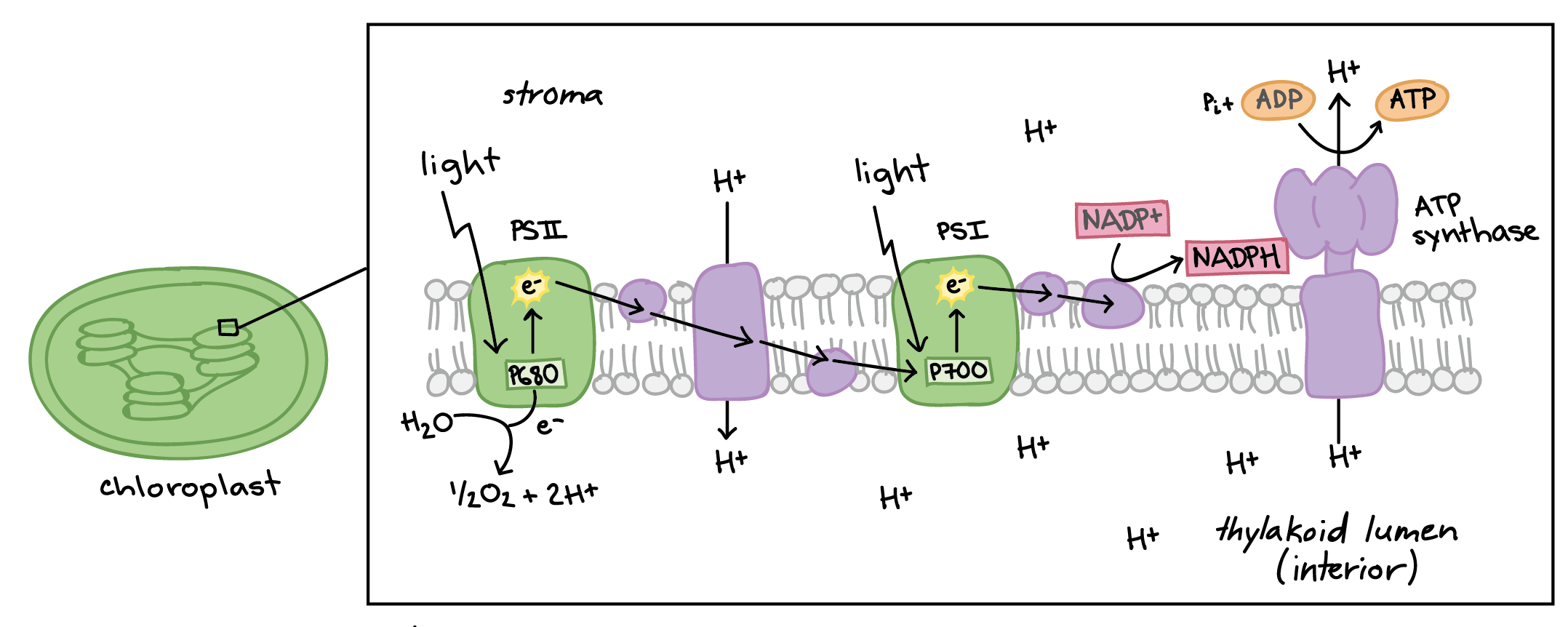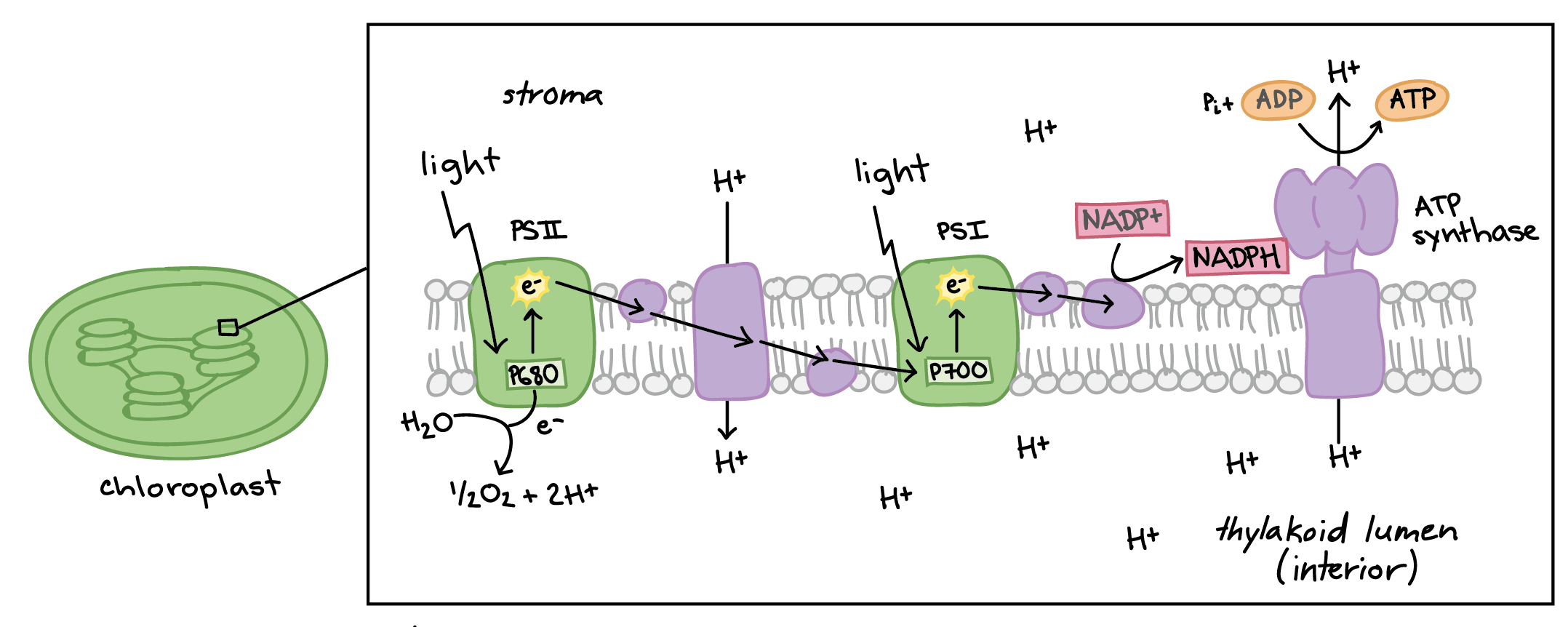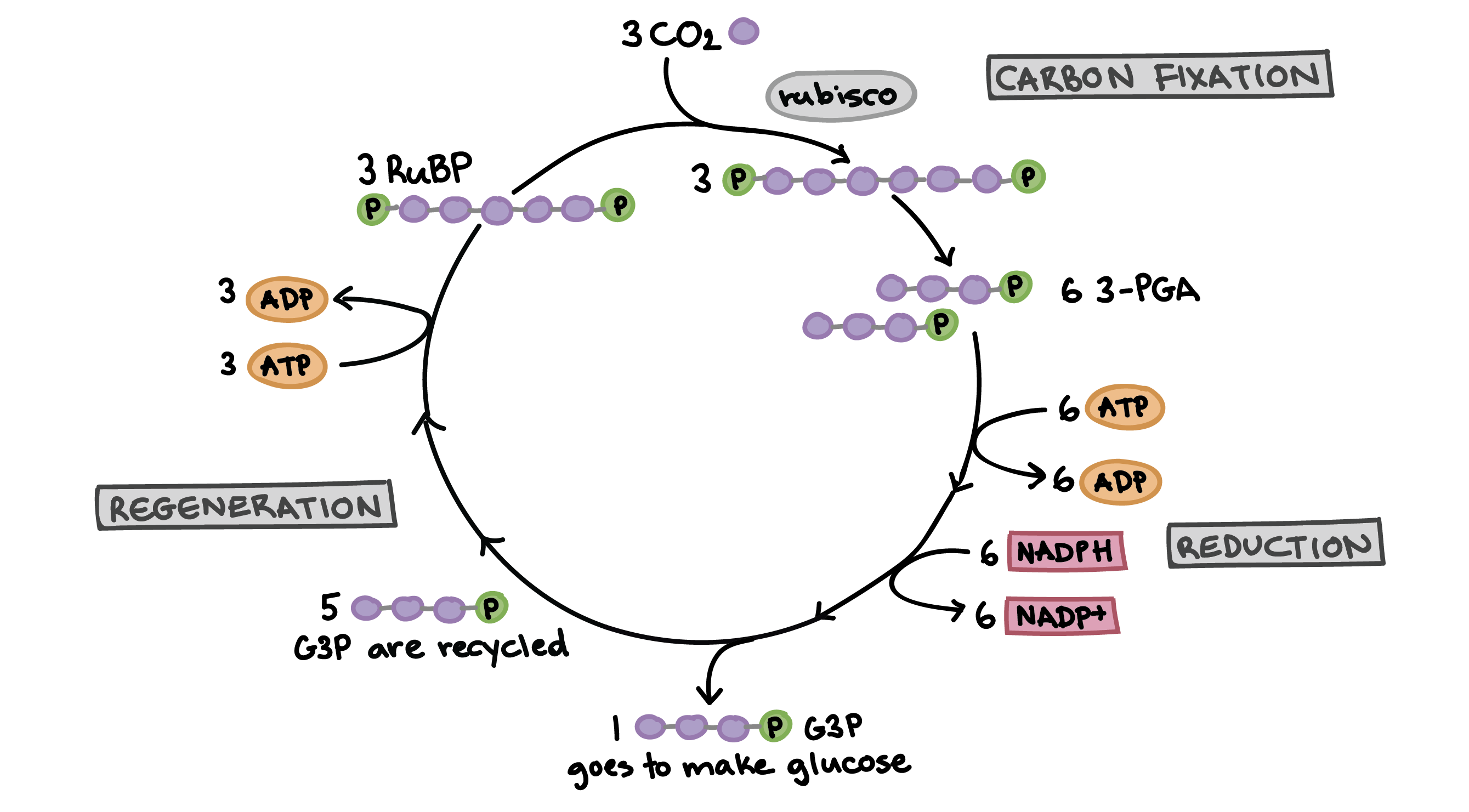Biology-Energetics Vocab
5.0(1)
5.0(1)
Card Sorting
1/25
Study Analytics
Name | Mastery | Learn | Test | Matching | Spaced |
|---|
No study sessions yet.
26 Terms
1
New cards
Energy
Ability to perform work
2
New cards
Autotrophs
Use energy from sunlight, Carbon Dioxide, and water to make food
3
New cards
Heterotrophs
Organisms that cannot make their own food
4
New cards
ATP
Energy storage molecule used by most organisms (adenosine triphosphate)
5
New cards
Reduction
Addition of electrons to an atom or ion
6
New cards
Oxidation
Loss of an electron to an atom or ion
7
New cards
Photosynthesis
autotrophs convert sunlight into usable energy
8
New cards
Pigment
molecule that absorbs certain wavelengths or light and reflects/transmits others
9
New cards
Chlorophylls
most common and important photosynthetic pigments in plants and algae
10
New cards
Chloroplasts
organelles that contain pigments and chlorophyll in which photosynthesis occurs
11
New cards
Thylakoids
disk-shaped structures that contain photosynthetic pigments
12
New cards
Stroma
gel-like matrix that surrounds thylakoids
13
New cards
Grana
neatly folded thylakoids that resemble stacks of pancakes
14
New cards
Photosystems
light collecting units of chloroplasts
15
New cards
ATP Synthase
H+ ions released by photosystem II accumulate in the Thylakoid space. In a process called chemiosmosis, the ions cross the membrane through an ATP synthase channel. The energy released by the flow of H+ converts ADP to ATP
16
New cards
Photosystem II
light absorbed by photosystem II is used to split water, releasing O2, H+, and energized electrons

17
New cards
Photosystem I
electrons released by photosystem II are energized again in photosystem I. Enzymes in the membrane use the electrons to form high energy NADPH. NADPH is used to make sugar in the Calvin Cycle

18
New cards
Electron Carriers
molecules transfer electrons to Photosystem I
19
New cards
Calvin Cycle
the carbon fixing reactors that use the products of light to convert carbon dioxide and water to sugars

20
New cards
Cellular Respiration
food molecules are broken down to release energy for work
21
New cards
Glycolysis
glucose is converted to pyruvate, and energy is released
22
New cards
Aerobic Respiration
breakdown of pyruvate in the presence of oxygen
23
New cards
Krebs Cycles
series of oxidation reactions that make up the second phase of aerobic respiration
24
New cards
Anaerobic respiration
chemical reactions that release energy from food molecules in the absence of oxygen
25
New cards
Alcoholic Fermentation
anaerobic respiration that converts pyruvate to CO2 and ethanol
26
New cards
Lactic Acid Fermentation
anaerobic respiration in which pyruvate is converted to lactic acid